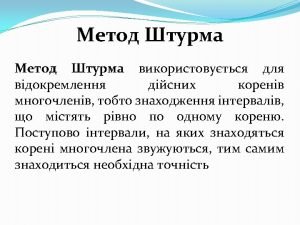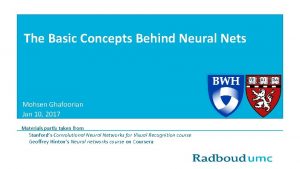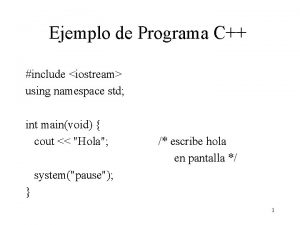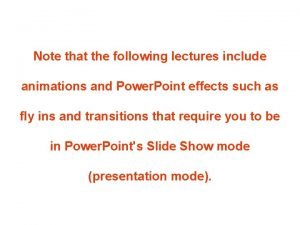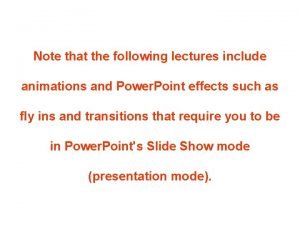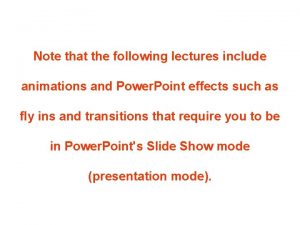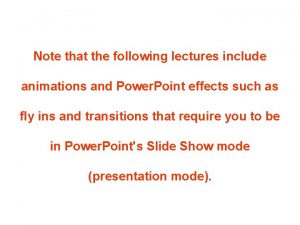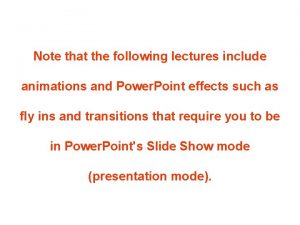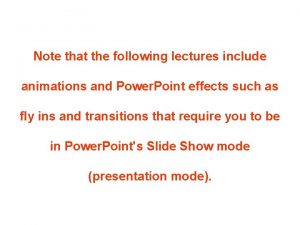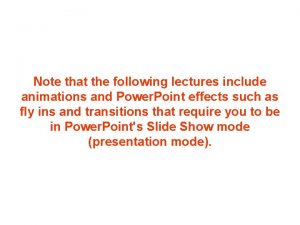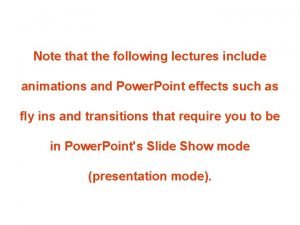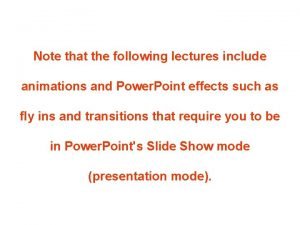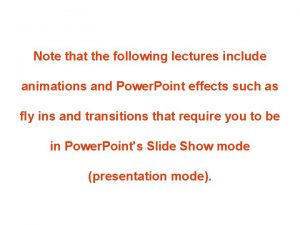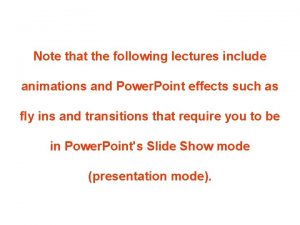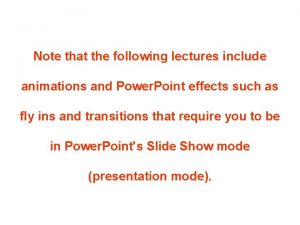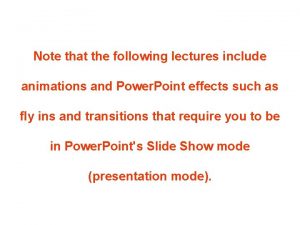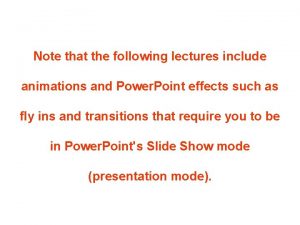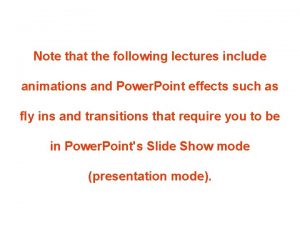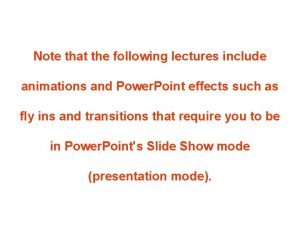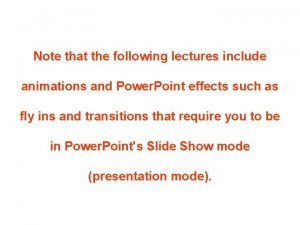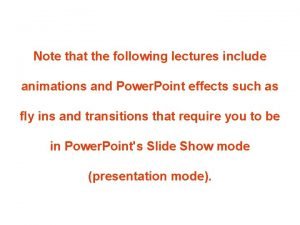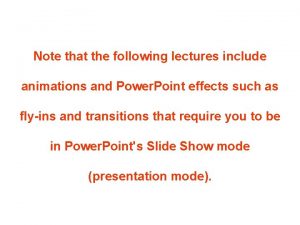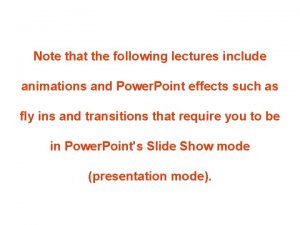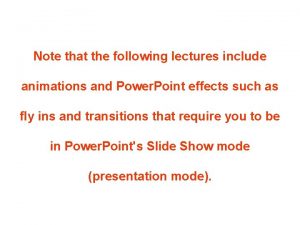Note that the following lectures include animations and



























































- Slides: 59

Note that the following lectures include animations and Power. Point effects such as fly ins and transitions that require you to be in Power. Point's Slide Show mode (presentation mode).

Chapter 6 Light and Telescopes

Guidepost Previous chapters have described the sky as it appears to our unaided eyes, but modern astronomers turn powerful telescopes on the sky. Chapter 6 introduces us to the modern astronomical telescope and its delicate instruments. The study of the universe is so challenging, astronomers cannot ignore any source of information; that is why they use the entire spectrum, from gamma rays to radio waves. This chapter shows how critical it is for astronomers to understand the nature of light. In each of the chapters that follow, we will study the universe using information gathered by the telescopes and instruments described in this chapter.

Outline I. Radiation: Information from Space A. Light as a Wave and a Particle B. The Electromagnetic Spectrum II. Optical Telescopes A. Two Kinds of Telescopes B. The Powers of a Telescope C. Buying a Telescope D. New-Generation Telescopes E. Interferometry III. Special Instruments A. Imaging Systems B. The Spectrograph

Outline (continued) IV. Radio Telescopes A. Operation of a Radio Telescope B. Limitations of the Radio Telescope C. Advantages of Radio Telescopes V. Astronomy from Space A. The Ends of the Visual Spectrum B. Telescopes in Space C. Cosmic Rays

Light and Other Forms of Radiation • The Electromagnetic Spectrum In astronomy, we cannot perform experiments with our objects (stars, galaxies, …). The only way to investigate them, is by analyzing the light (and other radiation) which we observe from them.

Light as a Wave (1) l c = 300, 000 km/s = 3*108 m/s • Light waves are characterized by a wavelength l and a frequency f. • f and l are related through f = c/l

Light as a Wave (2) • Wavelengths of light are measured in units of nanometers (nm) or Ångström (Å): 1 nm = 10 -9 m 1 Å = 10 -10 m = 0. 1 nm Visible light has wavelengths between 4000 Å and 7000 Å (= 400 – 700 nm).

Wavelengths and Colors Different colors of visible light correspond to different wavelengths.

Light as Particles • Light can also appear as particles, called photons (explains, e. g. , photoelectric effect). • A photon has a specific energy E, proportional to the frequency f: E = h*f h = 6. 626 x 10 -34 J*s is the Planck constant. The energy of a photon does not depend on the intensity of the light!!!

The Electromagnetic Spectrum Wavelength Frequency Need satellites to observe High flying air planes or satellites

Optical Telescopes Astronomers use telescopes to gather more light from astronomical objects. The larger the telescope, the more light it gathers.

Refracting/Reflecting Telescopes Focal length Refracting Telescope: Lens focuses light onto the focal plane Reflecting Telescope: Concave Mirror focuses light onto the focal plane Almost all modern telescopes are reflecting telescopes.

Secondary Optics In reflecting telescopes: Secondary mirror, to redirect the light path towards the back or side of the incoming light path. Eyepiece: To view and enlarge the small image produced in the focal plane of the primary optics.

Disadvantages of Refracting Telescopes • Chromatic aberration: Different wavelengths are focused at different focal lengths (prism effect). • Difficult and expensive to produce: All surfaces must be perfectly shaped; glass must be flawless; lens can only be supported at the edges Can be corrected, but not eliminated by second lens out of different material.

The Powers of a Telescope: Size Does Matter 1. Light-gathering power: Depends on the surface area A of the primary lens / mirror, proportional to diameter squared: A = p (D/2)2 D

The Powers of a Telescope (2) 2. Resolving power: Wave nature of light => The telescope aperture produces fringe rings that set a limit to the resolution of the telescope. Resolving power = minimum angular distance amin between two objects that can be separated. amin = 1. 22 (l/D) For optical wavelengths, this gives amin = 11. 6 arcsec / D[cm] amin

Seeing Weather conditions and turbulence in the atmosphere set further limits to the quality of astronomical images. Bad seeing Good seeing

The Powers of a Telescope (3) 3. Magnifying Power = ability of the telescope to make the image appear bigger. The magnification depends on the ratio of focal lengths of the primary mirror/lens (Fo) and the eyepiece (Fe): M = Fo/Fe A larger magnification does not improve the resolving power of the telescope!

The Best Location for a Telescope Far away from civilization – to avoid light pollution

The Best Location for a Telescope (2) Paranal Observatory (ESO), Chile On high mountain-tops – to avoid atmospheric turbulence ( seeing) and other weather effects

Traditional Telescopes (1) Secondary mirror Traditional primary mirror: sturdy, heavy to avoid distortions.

Traditional Telescopes (2) The 4 -m Mayall Telescope at Kitt Peak National Observatory (Arizona)

Advances in Modern Telescope Design (1) Modern computer technology has made possible significant advances in telescope design: Segmented mirror 1. Lighter mirrors with lighter support structures, to be controlled dynamically by computers Floppy mirror

Adaptive Optics Computer-controlled mirror support adjusts the mirror surface (many times per second) to compensate for distortions by atmospheric turbulence

Advances in Modern Telescope Design (2) 2. Simpler, stronger mountings (“Alt-azimuth mountings”) to be controlled by computers

Examples of Modern Telescope Design (1) Design of the Large Binocular Telescope (LBT) The control room of the 4 -m Mayall Telescope on Kitt Peak.

Examples of Modern Telescopic Design, Part 1

Examples of Modern Telescope Design (2) The Very Large Telescope (VLT) 8. 1 -m mirror of the Gemini Telescopes

Examples of Modern Telescopic Design, Part 2

Interferometry Recall: Resolving power of a telescope depends on diameter D: amin = 1. 22 l/D. This holds true even if not the entire surface is filled out. • Combine the signals from several smaller telescopes to simulate one big mirror Interferometry

CCD Imaging CCD = Charge-coupled device • More sensitive than photographic plates • Data can be read directly into computer memory, allowing easy electronic manipulations Negative image to enhance contrasts False-color image to visualize brightness contours

The Spectrograph Using a prism (or a grating), light can be split up into different wavelengths (colors!) to produce a spectrum. Spectral lines in a spectrum tell us about the chemical composition and other properties of the observed object

Radio Astronomy Recall: Radio waves of l ~ 1 cm – 1 m also penetrate the Earth’s atmosphere and can be observed from the ground.

Radio Telescopes Large dish focuses the energy of radio waves onto a small receiver (antenna) Amplified signals are stored in computers and converted into images, spectra, etc.

Radio Maps Radio maps are often color coded: Like different colors in a seating chart of a baseball stadium may indicate different seat prices, … colors in a radio map can indicate different intensities of the radio emission from different locations on the sky.

Radio Interferometry Just as for optical telescopes, the resolving power of a radio telescope is amin = 1. 22 l/D. For radio telescopes, this is a big problem: Radio waves are much longer than visible light Use interferometry to improve resolution!

Radio Interferometry (2) The Very Large Array (VLA): 27 dishes are combined to simulate a large dish of 36 km in diameter. Even larger arrays consist of dishes spread out over the entire U. S. (VLBA = Very Long Baseline Array) or even the whole Earth (VLBI = Very Long Baseline Interferometry)!

The Largest Radio Telescopes The 300 -m telescope in Arecibo, Puerto Rico The 100 -m Green Bank Telescope in Green Bank, WVa.

Science of Radio Astronomy Radio astronomy reveals several features, not visible at other wavelengths: • Neutral hydrogen clouds (which don’t emit any visible light), containing ~ 90 % of all the atoms in the Universe. • Molecules (often located in dense clouds, where visible light is completely absorbed). • Radio waves penetrate gas and dust clouds, so we can observe regions from which visible light is heavily absorbed.

Infrared Astronomy Most infrared radiation is absorbed in the lower atmosphere. NASA infrared telescope on Mauna Kea, Hawaii Infrared cameras need to be cooled to very low temperatures, usually using liquid nitrogen. However, from high mountain tops or high -flying air planes, some infrared radiation can still be observed.

6 -4 Airborne and Space Telescopes

Airborne Telescopes • Infrared cameras need to be cooled to very low temperatures, usually using liquid nitrogen.

NASA’s Space Infrared Telescope Facility (SIRTF) Infrared light with wavelengths much longer than visible light (“Far Infrared”) can only be observed from space.

Ultraviolet Astronomy • Ultraviolet radiation with l < 290 nm is completely absorbed in the ozone layer of the atmosphere. • Ultraviolet astronomy has to be done from satellites. • Several successful ultraviolet astronomy satellites: IUE, EUVE, FUSE • Ultraviolet radiation traces hot (tens of thousands of degrees), moderately ionized gas in the Universe.

The Hubble Space Telescope • Launched in 1990; maintained and upgraded by several space shuttle service missions throughout the 1990 s and early 2000’s • Avoids turbulence in the Earth’s atmosphere • Extends imaging and spectroscopy to (invisible) infrared and ultraviolet

Gamma-Ray Astronomy Gamma-rays: most energetic electromagnetic radiation; traces the most violent processes in the Universe The Compton Gamma-Ray Observatory

Space Telescopes, Part 2 • HST successors • James Webb Space Telescope – Will be in solar orbit ~1 million miles from Earth • Herschel Space Observatory (2009) – Carried a 3 -m mirror and instruments cooled almost to absolute zero

X-Ray Astronomy • X-rays are completely absorbed in the atmosphere. • X-ray astronomy has to be done from satellites. X-rays trace hot (million degrees), highly ionized gas in the Universe. NASA’s Chandra X-ray Observatory

Space Telescopes, Part 3

High Energy Astronomy • Telescopes observing gamma-rays, Xrays, and ultraviolet sources must be located high in Earth’s atmosphere or in space – General-purpose telescopes: e. g. , Chandra – Single-subject telescopes: e. g. , Hindode

Chandra X-Ray Observatory

6 -5 Astronomical Instruments and Techniques • Cameras and photometers – Photographic plate (record image) • Long exposure detect faint objects • Brightness of objects not measured very precisely – Photometers (measure intensity of the light) • Sensitive light meter measures brightness of objects very precisely – Charge-coupled devices (CCDs) • Records image and measures the brightness

Spectrographs • Spectral lines in a spectrum tell us about the chemical composition and other properties of the observed object

Adaptive Optics • Computer-controlled mirror support adjusts the mirror surface (many times per second) to compensate for distortions by atmospheric turbulence

Interferometry • Combine the signals from several smaller telescopes to simulate one big mirror

6 -6 Non-Electromagnetic Astronomy • Radiation from space does not only come in the form of electromagnetic radiation – Particle astronomy • Earth is constantly bombarded cosmic rays – highly energetic subatomic particles traveling through space at high velocities – Gravity wave astronomy • Gravity waves predicted to be produced by an mass that accelerates, but would be extremely weak and difficult to detect • Inferred, but not yet detected

Discussion Questions, Part 1 • Why would you not include sound waves in the electromagnetic spectrum? – Hint: See Figure 6 -2. Do sound travel at the speed of light? What about through a vacuum? • Why do optical astronomers often put their telescopes at the tops of mountains, whereas radio astronomers sometimes put their telescopes in deep valleys? – Hint: See Figure 6 -3

Cosmic Rays • Radiation from space does not only come in the form of electromagnetic radiation (radio, …, gamma-rays) • Earth is also constantly bombarded by highly energetic subatomic particles from space: Cosmic Rays • The source if cosmic rays is still not well understood.
 #include stdio.h #include stdlib.h #include string.h
#include stdio.h #include stdlib.h #include string.h #include stdio.h #include conio.h #include stdlib.h
#include stdio.h #include conio.h #include stdlib.h What is animation in multimedia
What is animation in multimedia Impulse-style scroll animations
Impulse-style scroll animations Pcr gif animation
Pcr gif animation Google photos animations
Google photos animations Loffe animations
Loffe animations Animation frame unit
Animation frame unit Ngoại tâm thu thất chùm đôi
Ngoại tâm thu thất chùm đôi Block xoang nhĩ là gì
Block xoang nhĩ là gì Thơ thất ngôn tứ tuyệt đường luật
Thơ thất ngôn tứ tuyệt đường luật Thơ thất ngôn tứ tuyệt đường luật
Thơ thất ngôn tứ tuyệt đường luật Chiến lược kinh doanh quốc tế của walmart
Chiến lược kinh doanh quốc tế của walmart Tìm vết của mặt phẳng
Tìm vết của mặt phẳng Hãy nói thật ít để làm được nhiều
Hãy nói thật ít để làm được nhiều Tôn thất thuyết là ai
Tôn thất thuyết là ai Gây tê cơ vuông thắt lưng
Gây tê cơ vuông thắt lưng Sau thất bại ở hồ điển triệt
Sau thất bại ở hồ điển triệt Difference between note making and note taking
Difference between note making and note taking Signal words example sentences
Signal words example sentences Difference between note making and note taking
Difference between note making and note taking Draw a specimen of debit note
Draw a specimen of debit note What is credit note and debit note
What is credit note and debit note Linear method of note taking
Linear method of note taking Goods received note
Goods received note Simple discount note
Simple discount note Does iostream include string
Does iostream include string Using namespace std
Using namespace std #include iostream #include string
#include iostream #include string #include iostream #include cmath
#include iostream #include cmath Include stdlib.h
Include stdlib.h H
H Que es #include iostream en c++
Que es #include iostream en c++ #include iostream using namespace std
#include iostream using namespace std Namespace string
Namespace string Utilities and energy lecture
Utilities and energy lecture What is text linguistics
What is text linguistics Molecular biology lecture
Molecular biology lecture Rick trebino lectures
Rick trebino lectures Neonatology lectures
Neonatology lectures Data mining lectures
Data mining lectures Advanced medicinal chemistry
Advanced medicinal chemistry Uva presentation template
Uva presentation template Cs614 short lectures
Cs614 short lectures Planning a software project
Planning a software project Radio astronomy lectures
Radio astronomy lectures Dr sohail lectures
Dr sohail lectures Introduction to web engineering
Introduction to web engineering Do words have power
Do words have power Frcr physics lectures
Frcr physics lectures Frcr physics lectures
Frcr physics lectures Introduction to recursion
Introduction to recursion Guyton physiology lectures
Guyton physiology lectures Aerodynamics lectures
Aerodynamics lectures Theory of translation lectures
Theory of translation lectures

